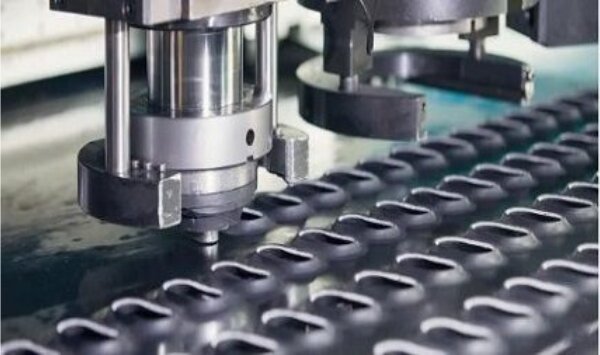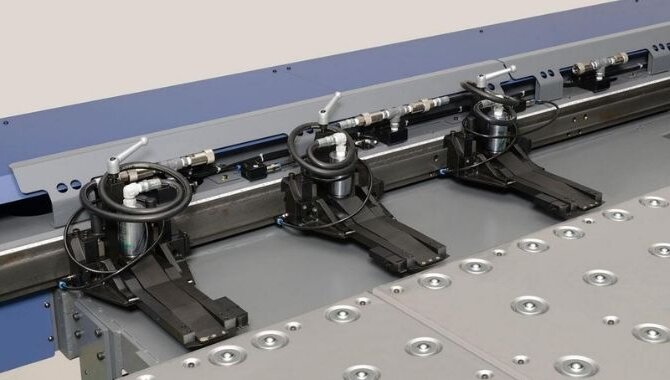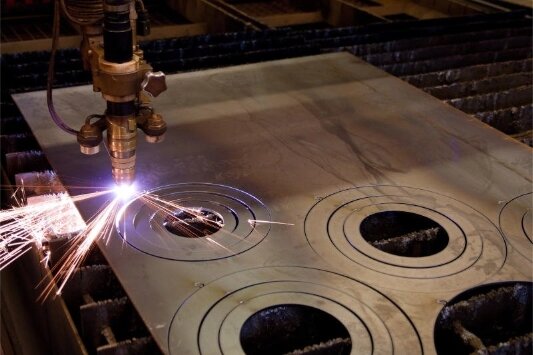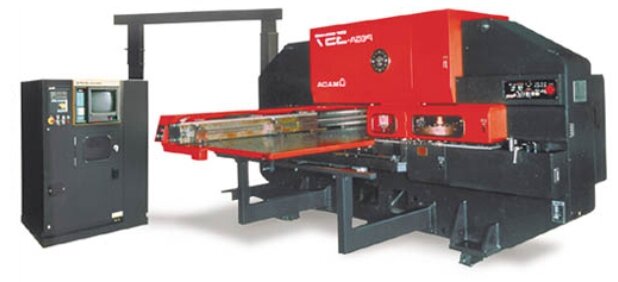In precision sheet metal forming, small details often determine whether a part succeeds or fails. One key factor is how tall a formed feature can be before the material starts to crack or bend out of shape. If the height becomes too great, the sheet stretches unevenly and loses its stability. When kept within limits, the part stays accurate and strong.
The 3:1 rule gives engineers and designers a straightforward way to find that balance. It links material strength, tooling setup, and process control into a single, straightforward guideline.
In this article, we’ll look at how the 3:1 rule works in punch forming and why it matters for accuracy. We’ll also explore what options you have when your design needs to exceed it.

Understanding the 3:1 Rule for Sheet Metal Punching
The 3:1 rule is a simple guideline that defines how high a feature can be formed without damaging the sheet metal. It means the height of a formed feature should not exceed three times the sheet’s thickness. For example, if the sheet is 1 mm thick, the formed height should stay within 3 mm.
This ratio helps prevent the metal from stretching too much, cracking, or tearing during punch forming. It also lowers tool wear and makes it easier to produce consistent, accurate parts. Staying within this limit maintains the material’s grain structure stability, which enhances overall quality.
The 3:1 ratio is based on years of practical forming experience and testing. Engineers discovered that when the formed height goes beyond three times the thickness, the stress in the metal increases sharply. That’s usually when cracks, distortion, or loss of precision begin to appear.
Why the 3:1 Ratio Matters?
Forming too deeply can weaken the material and affect part accuracy. The 3:1 ratio helps keep sheet metal parts consistent, strong, and easy to assemble.
Balancing Forming Depth and Material Strength
When the height of a formed feature exceeds three times the sheet thickness, the metal starts to stretch unevenly. The material thins out in the formed area, reducing its strength. As the thickness decreases, the metal’s ability to handle stress drops quickly, which often leads to cracks or small tears near bends or corners.
This problem is more pronounced in metals with low ductility, such as stainless steel or rugged aluminum alloys. Even softer materials, such as mild steel, can warp or wrinkle when formed too deeply. Once this happens, the part can lose its shape and may not meet appearance or dimension standards.
Following the 3:1 rule keeps stress within a safe range. The metal stretches evenly without harming its surface or grain structure. This results in stronger parts, longer tool life, and fewer production rejects.
Impact on Dimensional Accuracy
Exceeding the 3:1 ratio not only weakens the metal but also reduces precision. When the form is too deep, the metal cannot return to its intended shape after forming. Uneven stretching, springback, and residual stress cause dimensional errors.
These slight inaccuracies can cause trouble during assembly. Misaligned holes, uneven corners, or poorly fitting parts may appear, especially when several formed pieces must align. Such problems often result in rework, wasted materials, and extended lead times.
Keeping the form height within the 3:1 limit helps maintain stable dimensions and tight tolerances. It enhances repeatability between parts and ensures a smoother assembly process. In large-scale production, this consistency lowers costs and supports reliable quality control.

Material Considerations
Different metals react differently when stressed. The material type and thickness both affect how far you can safely form a sheet without damaging it.
Influence of Material Type
Aluminum has good flexibility, which makes it easier to form into various shapes. It can handle slightly deeper shapes before thinning or cracking. However, because it’s soft, poor tooling finish can leave surface marks or cause minor distortion.
Stainless steel is stronger but less flexible. It resists shaping, which means it’s more likely to crack if formed beyond the 3:1 limit. Due to its high strength, it requires a greater forming force and precise control of punch speed and lubrication.
Cold-rolled steel offers a good balance between aluminum and stainless steel. It forms smoothly under the 3:1 guideline and holds its shape well. It’s fine, uniform grain structure supports clean bends and consistent results, making it a common choice for production work.
Effect of Material Thickness
Sheet thickness has a substantial impact on forming depth. Thicker sheets can take more stretching and stress before failing. Their extra material allows slightly deeper forms without severe thinning. In such cases, engineers can sometimes adjust the 3:1 ratio depending on material type and tooling condition.
Thin sheets are much more sensitive to deformation. Even a small amount of over-forming can lead to tearing or visible distortion. For thin materials, it’s best to follow or slightly reduce the 3:1 ratio to protect part quality. In these cases, tool sharpness, proper lubrication, and accurate punch clearance become especially important for preventing defects.
Problems When Exceeding the 3:1 Limit
Ignoring the 3:1 rule often leads to both visible and hidden defects. When the height exceeds safe limits, the material’s structure and shape begin to fail.
Material Cracking and Distortion
Cracking is one of the first signs of overforming. When the punch goes too deep, the outer layers of the metal stretch past their limit. The material can no longer flow evenly, so it begins to split or thin out in areas of high stress.
Springback is another common problem. After the punch is lifted, the metal tries to return to its original form. Because it was overstretched, it rebounds unevenly. This causes the formed feature to end up either taller or shallower than expected, making it hard to meet dimensional targets.
Overforming can also distort the surrounding sheet area. If one section stretches too much, nearby areas shift or warp. This misalignment can lead to twisting or uneven surfaces. As a result, the part may not fit properly during assembly and may require rework or additional adjustment.
Poor Feature Definition
Exceeding the 3:1 ratio often reduces the sharpness and accuracy of formed features. The material stretches unevenly, turning crisp corners into rounded shapes. Deep forms can also cause thin spots or uneven walls, weakening the part’s structure.
Dimensional variation increases as well. Slight differences in tool wear, lubrication, or material batches can result in noticeable variations between parts. These inconsistencies can disrupt automated assembly or any process that depends on tight tolerances.
Poor feature definition affects both the look and performance of a product. Misaligned holes, uneven sealing surfaces, or incorrect clearances can all result from excessive forming.

What If You Can’t Follow the 3:1 Rule?
Sometimes part designs require deeper features than the 3:1 rule allows. In such cases, engineers can employ several strategies to form safely without compromising part quality or stability.
One effective method is to adjust the feature design. Instead of forming the full height in one hit, the feature can be made in several smaller forming steps. This process, known as progressive forming, spreads the strain gradually. It helps the metal stretch more evenly, reducing the risk of cracks, thinning, and springback while still reaching the needed height.
Another approach is to use heat to soften the metal before forming. Localized annealing or heat treatment enhances ductility, making the material more flexible and less prone to cracking. This works exceptionally well for tough materials such as stainless steel or titanium, which tend to fracture when formed too deeply.
Choosing a more formable material is also an option. Metals like aluminum or mild steel with higher elongation rates can handle deeper forming without failure. Changing the material grade is often easier and less costly than redesigning tooling or adjusting the forming setup.
Tooling improvements can further extend the forming limit. Increasing the punch and die radius, improving surface finish, or applying advanced coatings helps reduce friction and distribute stress more evenly. Reasonable lubrication control is equally important—it ensures smooth metal flow and prevents damage during deeper forming operations.
Ready to make sure your sheet metal parts meet design and performance goals? Upload your CAD files or drawings today, and our engineers will review them for manufacturability, forming limits, and cost efficiency—all within 24 hours.
FAQs
What happens if the formed height exceeds three times the thickness?
If the formed height goes beyond the 3:1 limit, the sheet metal stretches too far and becomes unstable. This can lead to cracks, tears, or surface distortion. The shape may lose accuracy, making parts more complicated to assemble and function properly. Overforming also increases tool wear, which shortens the life of the punch and die.
Is the 3:1 rule the same for all materials?
The 3:1 ratio is a general rule, but the safe forming limit depends on the metal’s ductility and strength. Softer materials, such as aluminum, can sometimes exceed this ratio slightly without damage. Harder metals, such as stainless steel or titanium, require tighter control because they resist stretching and are more prone to cracking.
Can special tooling or heat treatment extend the forming limit?
Yes. With the proper tooling and forming techniques, it’s possible to go beyond the 3:1 ratio safely. Larger die radii, smoother tool finishes, and consistent lubrication help reduce stress during the forming process. Heat treatment or localized annealing can also make the metal softer and more easily formable.
How can I verify if my design follows the 3:1 guideline?
To check your design, divide the feature height by the sheet’s thickness. If the result is three or fewer, it follows the rule. For example, a 3 mm feature on a 1 mm sheet meets the 3:1 ratio. If the number is higher, you may need to change the design, use a different material, or adjust the forming process.
Hey, I'm Kevin Lee

For the past 10 years, I’ve been immersed in various forms of sheet metal fabrication, sharing cool insights here from my experiences across diverse workshops.
Get in touch

Kevin Lee
I have over ten years of professional experience in sheet metal fabrication, specializing in laser cutting, bending, welding, and surface treatment techniques. As the Technical Director at Shengen, I am committed to solving complex manufacturing challenges and driving innovation and quality in each project.




